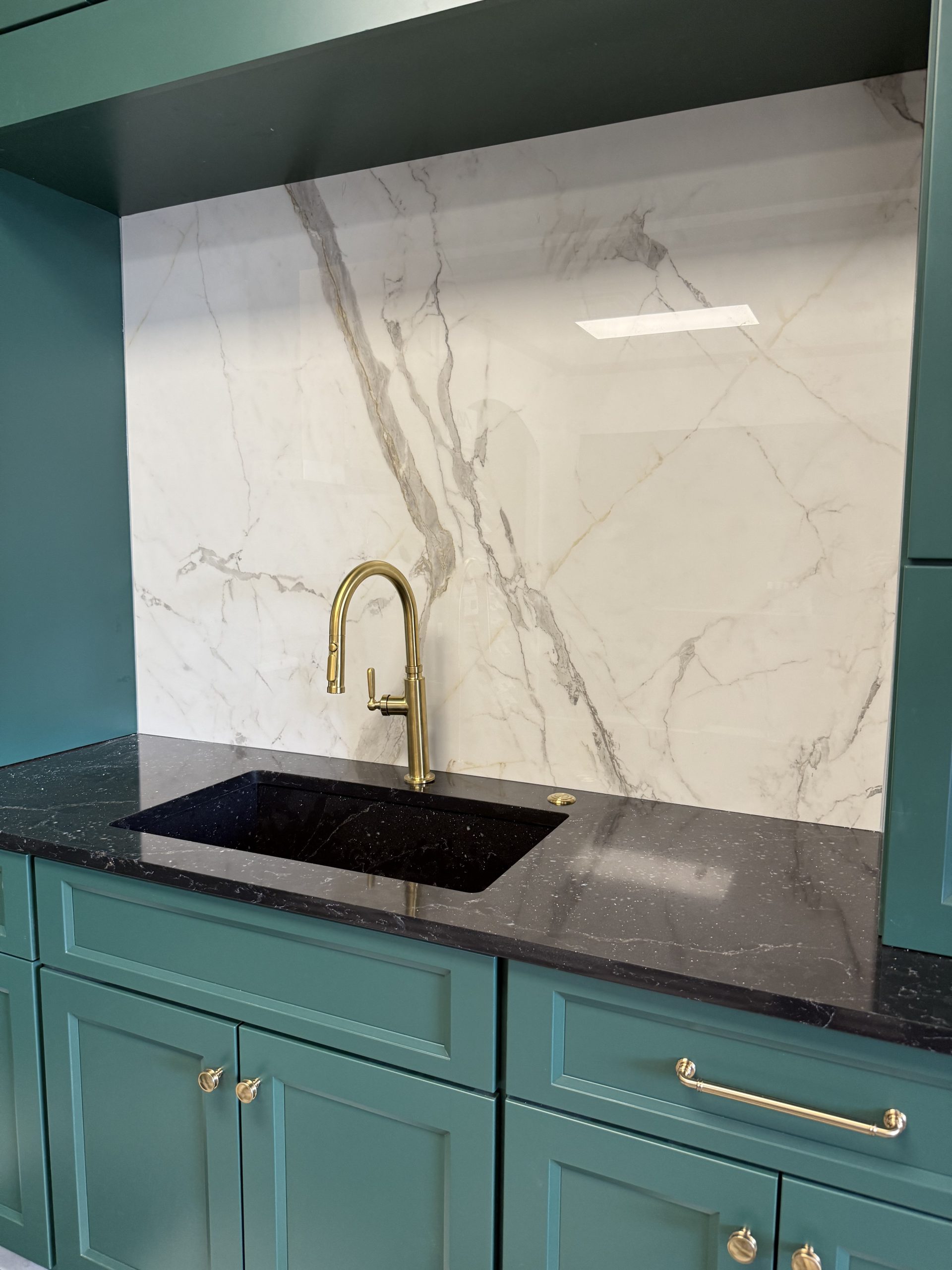When faced with endless design options, many homeowners quickly feel overwhelmed. From countertops and color palettes to light fixtures and flooring, the decisions can seem endless. As one expert shared in a recent discussion:
“When people feel overwhelmed, it usually means they’ve been given too many options. The best way forward is to ask more focused questions.”
This approach guiding with questions rather than answers is not just effective for design but also a powerful way to make confident, lasting choices for your home. In this article, we’ll explore how to simplify kitchen design decisions, the role of aesthetics and function, and practical considerations like materials, maintenance, and style trends.
In this article, we’ll explore how to make confident countertop decisions, highlight popular materials and their pros and cons, share care and maintenance tips, and break down style choices that can transform your kitchen or bathroom.
Asking the Right Questions: A Design Professional’s Secret Tool
Instead of offering even more options, professionals narrow choices by focusing on what truly matters to the homeowner.
- Do they prefer a sparkling finish or a matte color palette?
- Will the kitchen include new pulls, faucets, or lighting fixtures?
- What color is the flooring, and how will it interact with other elements?
By breaking decisions into smaller, specific questions, the homeowner gains clarity and avoids decision fatigue. The process transforms from overwhelming to empowering.
Beyond Aesthetics: Balancing Function and Lifestyle
While aesthetics are often the first thing homeowners consider, functionality should drive the final decision. For example:
- Busy families may prioritize durable, stain-resistant surfaces.
- Entertainers might choose bold, eye-catching finishes.
- Minimalists may prefer muted tones and seamless cabinetry lines.
The key is to align design choices with daily habits and long-term lifestyle goals, ensuring the kitchen remains beautiful and practical for years.
Pros and Cons of Common Kitchen Countertop Materials
One of the most overwhelming aspects of kitchen design is choosing the right countertop material. Here’s a quick comparison to simplify the process:
| Material | Pros | Cons |
| Granite | Durable, heat-resistant, natural stone look | Requires sealing, can chip if misused |
| Quartz | Low-maintenance, non-porous, wide color options | Less heat-resistant, pricier |
| Marble | Luxurious, timeless beauty | Prone to stains, requires upkeep |
| Butcher Block | Warm, natural appearance, repairable surface | Scratches easily, requires sealing |
| Laminate | Affordable, versatile designs | Less durable, can peel or warp |
This breakdown helps homeowners balance beauty, budget, and maintenance before making a decision.
Styles and Finishes: From Sparkles to Matte Elegance
The transcript highlights the common dilemma of sparkle vs. matte finishes. Each finish communicates a different personality:
- Sparkling or glossy finishes: Reflect light, ideal for modern or glam kitchens.
- Matte finishes: Provide a sophisticated, understated elegance that pairs well with natural wood tones.
Pairing the right finish with flooring, cabinetry, and lighting creates a cohesive design story rather than isolated design choices.
Common Myths About Kitchen Design Choices
Many homeowners hesitate to make decisions because of misconceptions. Let’s debunk a few:
- Myth: Granite is always the most durable option.
Fact: Quartz is often more durable and requires less maintenance. - Myth: Light-colored countertops stain too easily.
Fact: With proper sealing or non-porous materials, light surfaces can stay pristine. - Myth: You must choose matching finishes for every element.
Fact: Mixing metals and textures creates depth and visual interest.
Recognizing these myths helps homeowners make more confident, creative choices.
Care and Maintenance: Ensuring Long-Lasting Beauty
No matter which material or style is chosen, maintenance plays a key role in longevity:
- Quartz: Wipe with mild soap and water; avoid direct heat.
- Granite: Seal yearly to protect against stains.
- Marble: Use cutting boards and clean spills immediately.
- Butcher Block: Oil regularly to prevent drying and cracking.
With the right care, homeowners can enjoy their kitchen’s beauty without constant stress.
Real-World Applications: Beyond the Kitchen
Interestingly, these decision-making frameworks extend beyond kitchens. Homeowners use similar thought processes when designing:
- Bathroom vanities with quartz or marble.
- Outdoor kitchens with granite or concrete.
- Commercial spaces like cafés, where style and durability balance differently.
Asking targeted questions and weighing aesthetics against function applies across all spaces.
Conclusion: Simplifying Choices with the Right Questions
At the heart of good design is clarity. As the expert noted, “In turn, to answer your question, it would be ask more questions, but make them more specific about their space and what they’re looking for.”
When homeowners stop trying to explore every possible option and instead focus on guided questions, the process becomes enjoyable rather than stressful. Whether it’s choosing between sparkle and matte, granite and quartz, or modern and traditional, the best designs come from aligning choices with lifestyle and priorities.
Takeaway: Instead of chasing endless options, let your kitchen design journey be guided by the right questions, and your space will naturally reflect both your style and your needs.




